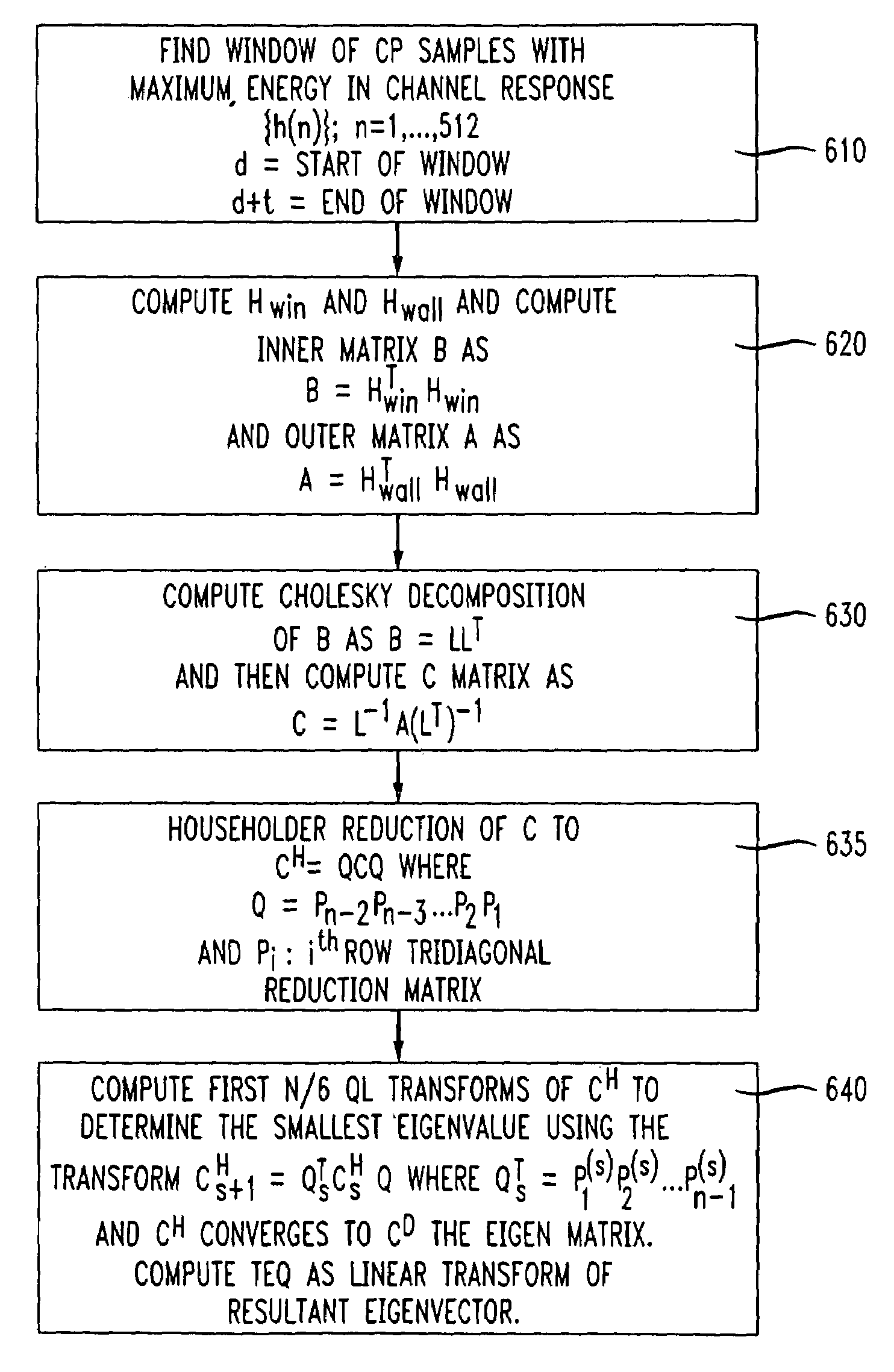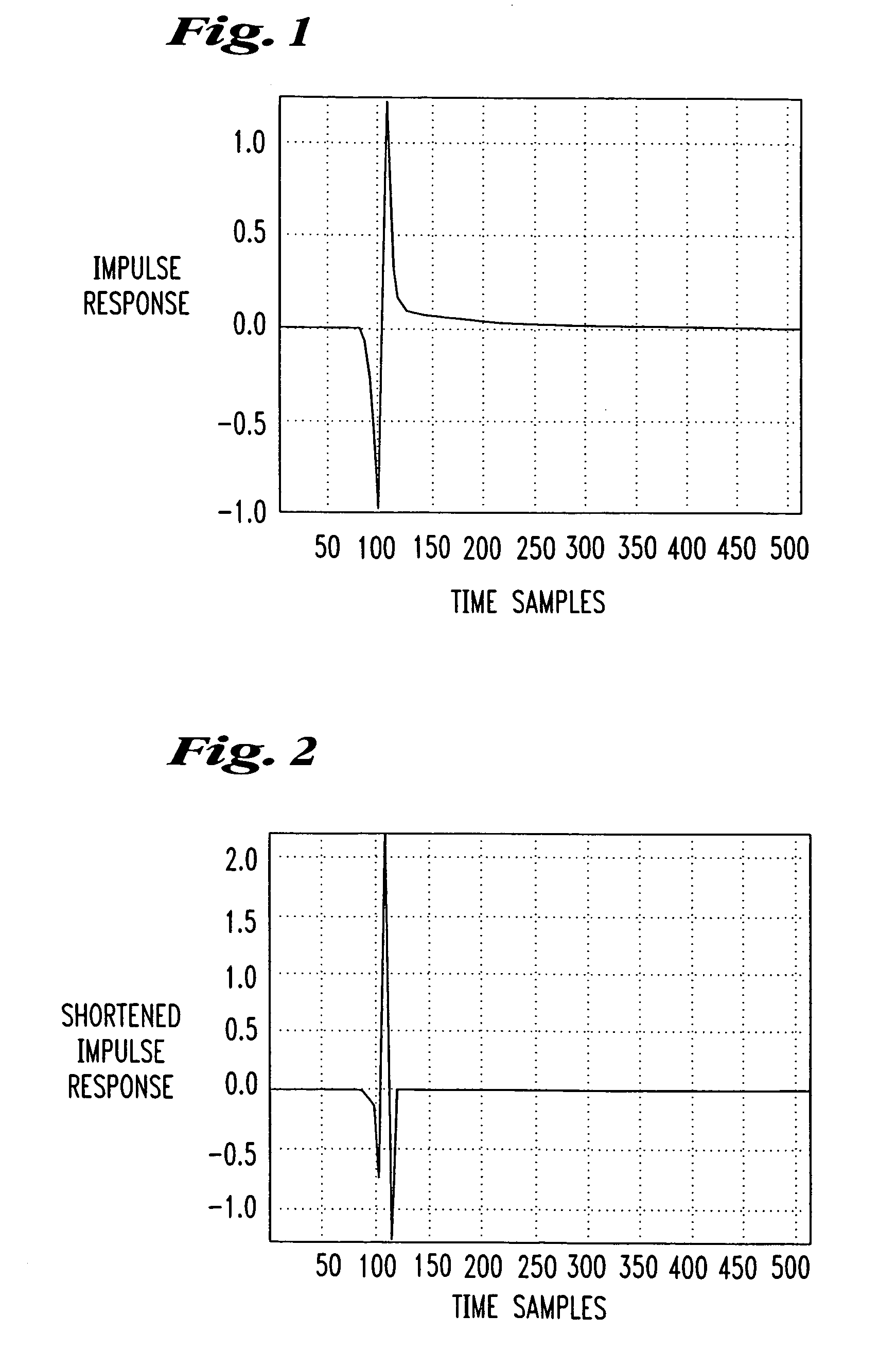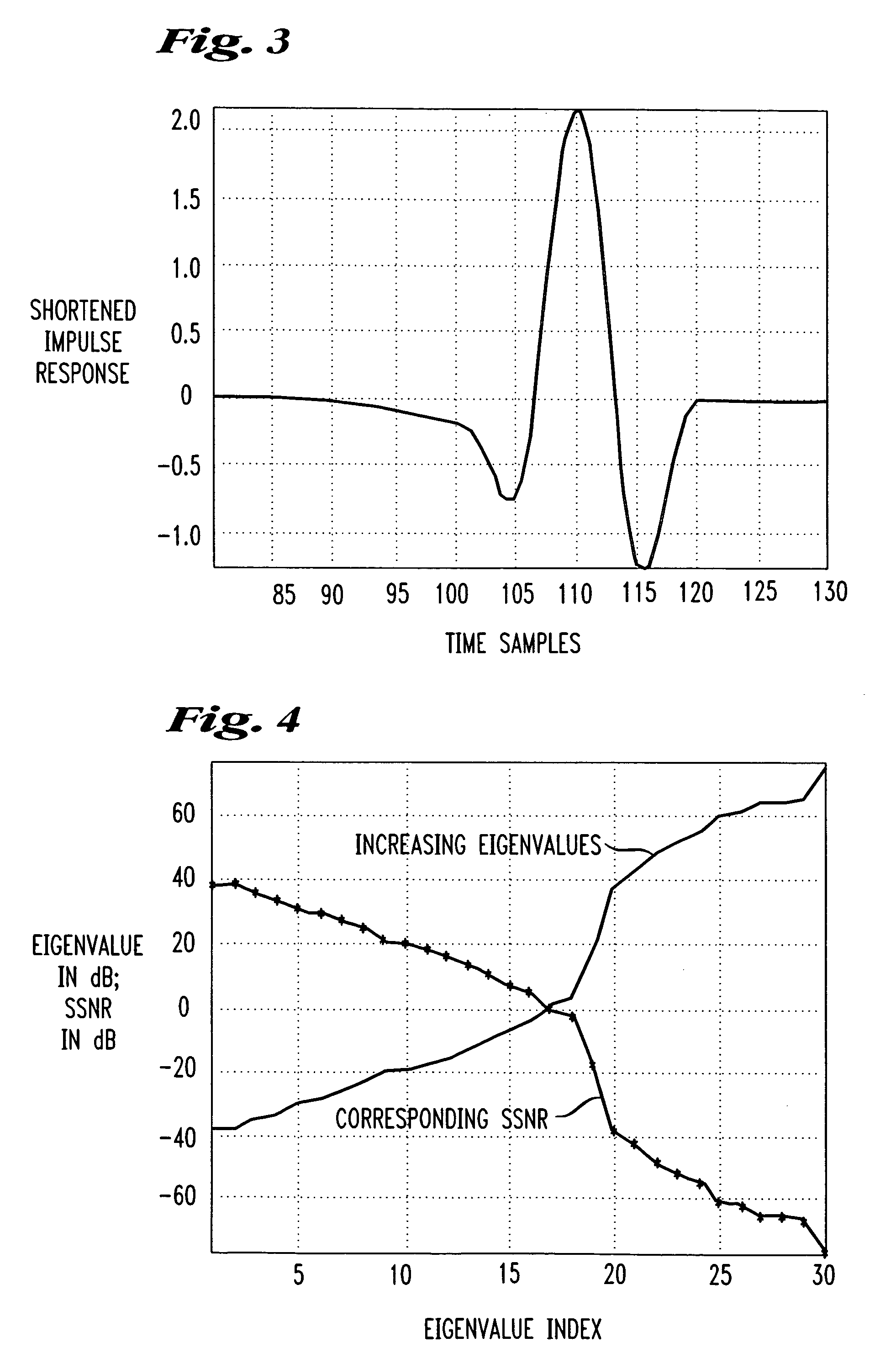Efficient reduced complexity windowed optimal time domain equalizer for discrete multitone-based DSL modems
a multi-tone-based dsl modem and optimal time domain technology, applied in the field of efficient reduced complexity, windowed, optimal time domain equalizer for discrete multi-tone-based dsl modems, to achieve the effect of reducing the error ra
- Summary
- Abstract
- Description
- Claims
- Application Information
AI Technical Summary
Benefits of technology
Problems solved by technology
Method used
Image
Examples
Embodiment Construction
[0032]The present invention is described by way of example to a TVRC modem depicted in FIG. 5 but the principles of the algorithm of FIG. 6 may be applied to any digital subscriber line modem known in the art including but not limited to ADSL or other DSL standard used in wired subscriber loops or extended to any data transmission system utilizing a guard band between data streams including orthogonal frequency division multiplexing (OFDM) systems typically used in wireless networks. Moreover, the present algorithm may find application in any digital data transmission system in which data is transmitted with a guard band (for example, a prefix, a suffix or a combination of prefix and suffix) and time domain equalization is used.
[0033]Referring to FIG. 5, the channel impulse response measured at a receiver 550 is a convolution of the transmit filters, receive filters, and the physical channel over which data is transmitted. Any physical channel over a few hundred feet in length exhib...
PUM
 Login to View More
Login to View More Abstract
Description
Claims
Application Information
 Login to View More
Login to View More - R&D
- Intellectual Property
- Life Sciences
- Materials
- Tech Scout
- Unparalleled Data Quality
- Higher Quality Content
- 60% Fewer Hallucinations
Browse by: Latest US Patents, China's latest patents, Technical Efficacy Thesaurus, Application Domain, Technology Topic, Popular Technical Reports.
© 2025 PatSnap. All rights reserved.Legal|Privacy policy|Modern Slavery Act Transparency Statement|Sitemap|About US| Contact US: help@patsnap.com



